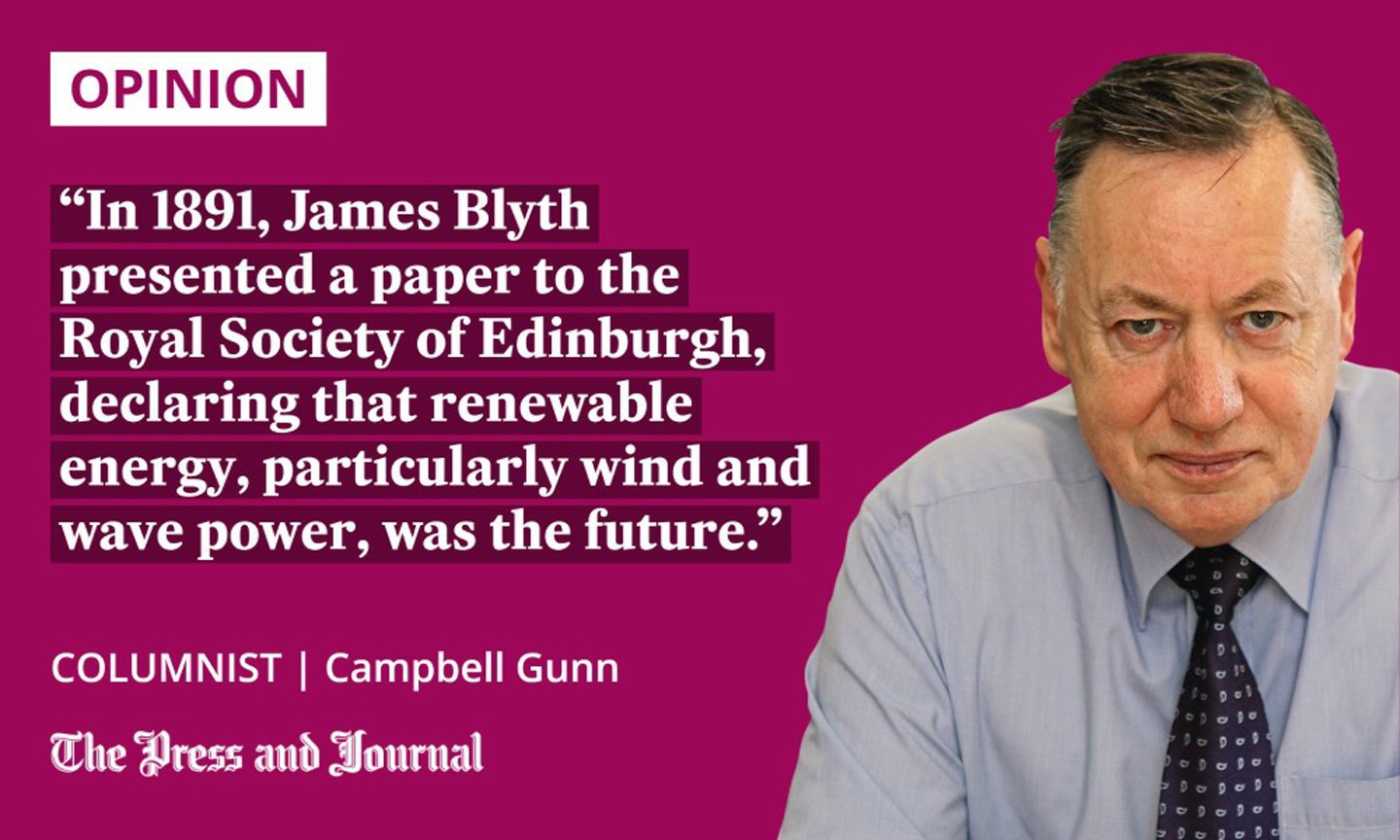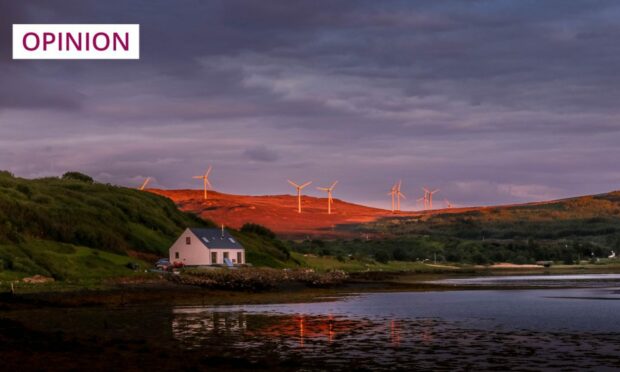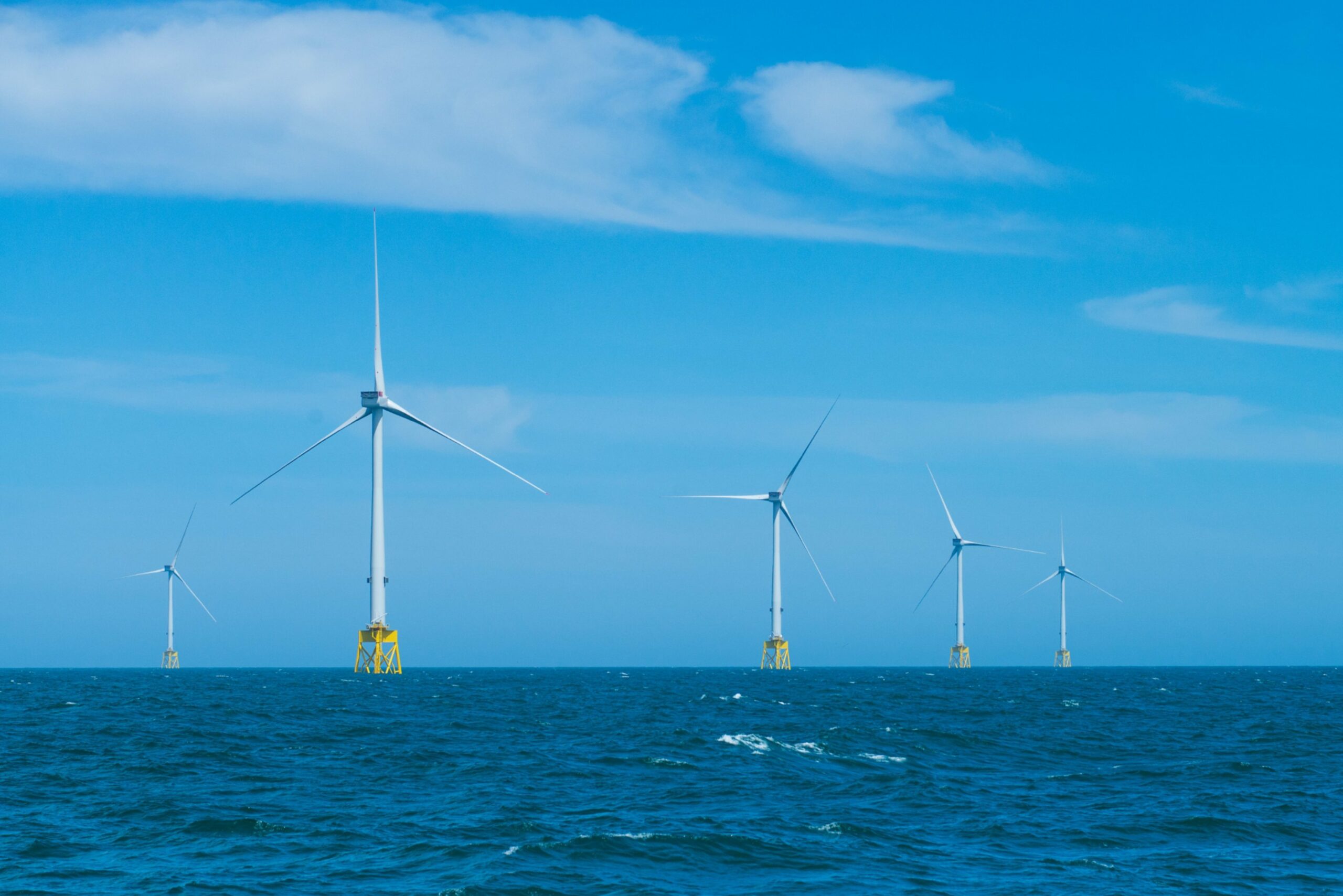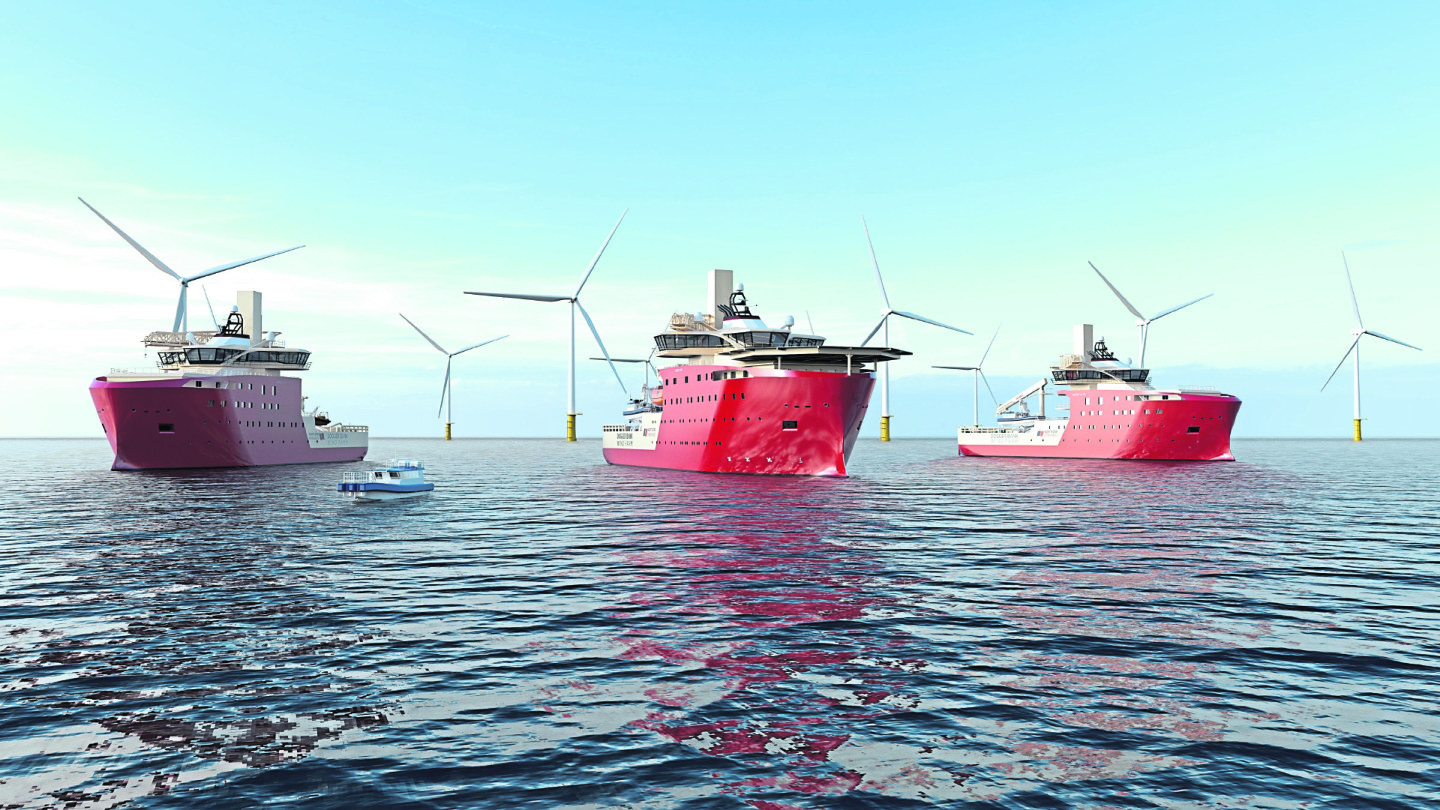Few people are aware that the back garden of a cottage in Aberdeenshire was the site, 135 years ago, of the world’s first wind-powered electricity generator.
It was built in the garden of the holiday home of James Blyth, in Marykirk, the village in which he’d been born, before going on to become professor of natural philosophy at the Glasgow and West of Scotland Technical College, now Strathclyde University.
In 1887, Blyth built a cloth-sailed windmill in his garden and stored the electricity it produced in accumulators, with which he then powered the lights in his house. He even offered to provide electric street lighting for the main street of the village from his invention, but was turned down by his neighbours.
He did, though, build one for the Montrose Lunatic Asylum, and it operated as a back-up system for the hospital for no less than 30 years.

Blyth later presented a paper to the Royal Society of Edinburgh, declaring that renewable energy, particularly wind and wave power, was the future. At the time, however, his views were virtually ignored in the wider world, and his wind power proposals considered uneconomic.
Scroll forward to today. Last week, Crown Estate Scotland announced three offshore wind projects off Shetland, which will produce the largest wind-to-hydrogen scheme in the world. It will be the world’s largest commercial round of developments for floating offshore wind.
The three projects will result in an average of £1.2 billion investment per gigawatt of capacity built. Initially, £56 million will be paid to Crown Estate Scotland by the successful applicants in option fees, money which will be passed to the Scottish Government for public spending.
Scotland has always led the way on wind power
Once operating, the projects will pay Crown Estate Scotland £4 million per gigawatt per year, money which will also go to Holyrood.
Last week also saw the first power generation from the Seagreen offshore wind farm, off the coast of Angus. The first turbine of a total of 114 was connected to the grid, and the whole farm is expected to be operational early next year.
The wind farm has cost £3 billion, and will be Scotland’s largest offshore – as well as being the world’s deepest fixed-bottom – wind farm. It is a joint venture between France’s TotalEnergies and SSE Renewables, a Scottish company.
SSE Renewables is also currently building the world’s largest offshore wind farm on Dogger Bank, 130 kilometres off the north-east coast of England. When complete in 2026, it will have around 600 turbines, and will be capable of supplying power to six million homes.
In addition, Scotland is set to see the first multi-terminal, high voltage, direct current interconnector to be built in Europe. Power from the northern isles will come ashore at Caithness before being transmitted south to the grid.
The system will convert alternating current from wind power generated on Shetland to direct current, which will then be transmitted through subsea cables to a switching station in Caithness, before being sent south to Moray, where it will provide electricity for homes in the north of Scotland.
Renewables are the future
The Scottish Government’s energy strategy, published in 2017, set a 2030 target for 50% of Scotland’s heat, transport and electricity consumption to be supplied by renewable sources. By 2050, the aim is to have decarbonised all our energy systems almost completely.
The overall direction of travel on renewable energy, particularly in Scotland, is undoubtedly positive. James Blyth would have been proud
On one day in August 2016, Scottish wind turbines actually contributed more power to the grid – 106% – than was used in Scotland.
There are, of course, still problems facing renewable energy in Scotland, particularly the punitive transmission charges imposed on electricity generated in areas remote from urban centres. This is something about which I have written and complained previously, and something which the UK Government needs to address to improve the viability of alternative sources of energy.
However, the overall direction of travel on renewable energy, particularly in Scotland, is undoubtedly positive. James Blyth would have been proud.
Last year, this son of the Mearns was belatedly inducted into the Scottish Engineering Hall of Fame. With all the recent announcements of major developments in Scotland and the rest of the UK, the honour could hardly have been more timely. But, even Blyth might have been agreeably surprised at the great leaps forward the technology has taken in recent years.
As he predicted all those years ago, wind power is the future if we are to replace the burning of fossil fuels with renewable energy and halt global warming.
Campbell Gunn is a retired political editor who served as special adviser to two first ministers of Scotland, and a Munro compleatist



Conversation